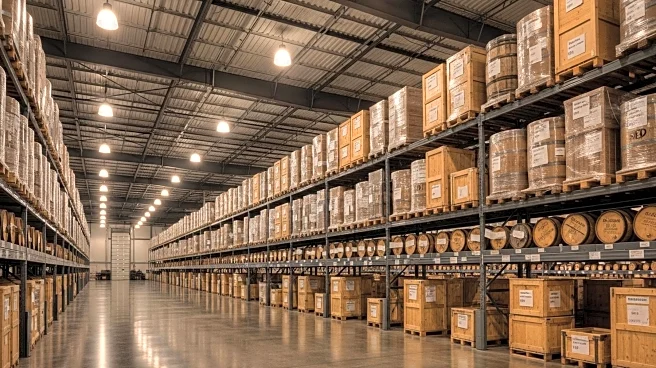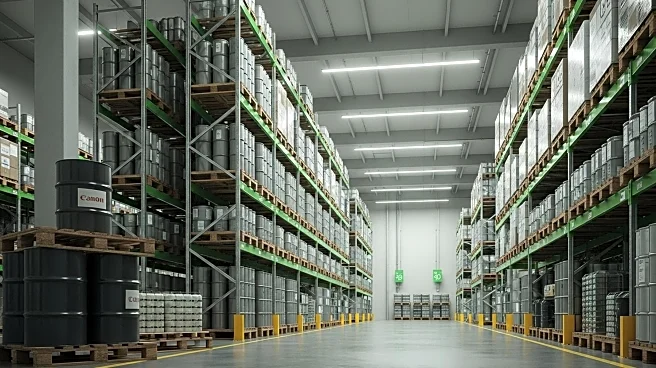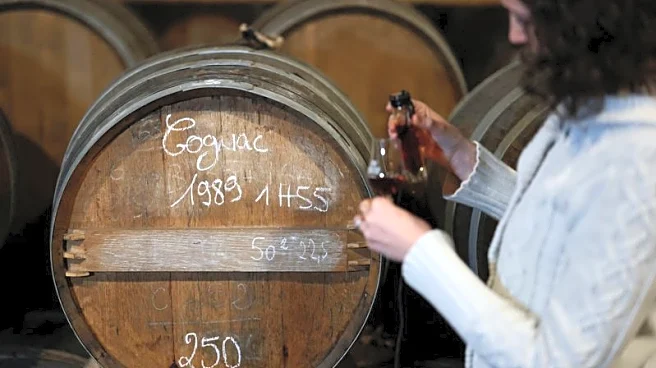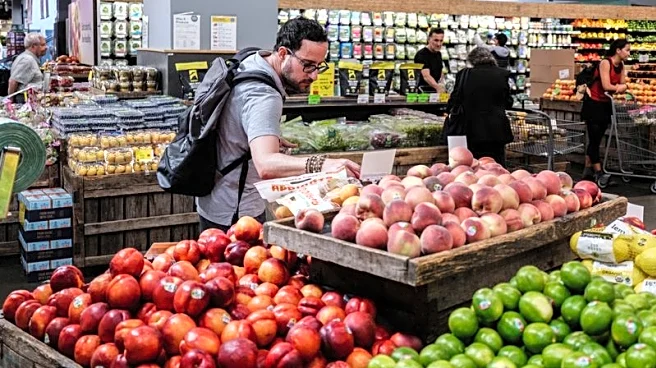What's Happening?
Diageo has announced a strategic overhaul of its North American supply chain, aiming to balance cost efficiency, sustainability, and long-term profitability. The company plans to close its bottling facility in Amherstburg, Ontario, by February 2026, shifting operations to Valleyfield, Quebec, and other sites closer to the U.S. This move is part of Diageo's 'Accelerate' program, designed to enhance operational resilience and address the $200 million annual impact from U.S. tariffs on UK and European imports. The fiscal 2025 results showed a contraction in organic operating margins due to restructuring costs, but Diageo projects a reversal in 2026 as savings are reinvested into premium brands like Don Julio and Crown Royal.
Why It's Important?
Diageo's strategic shift is significant for its potential impact on shareholder value and the spirits market. By focusing on high-margin products, the company aims to offset inflationary pressures and maintain growth. The strategy also emphasizes innovation, with initiatives like using drones for agave irrigation and investing in hydrogen fuel cell trucks. These efforts align with global ESG trends and cater to consumer preferences for eco-conscious brands. However, the strategy has faced skepticism, with shares falling over 20% since the announcement, reflecting concerns about execution risks and short-term challenges.
What's Next?
The success of Diageo's strategy will depend on its ability to manage transition costs without compromising brand equity or operational continuity. The company has set a $625 million cost-cutting target over three years, which is ambitious. The true test will be whether these structural changes lead to margin expansion and consistent cash flow generation, ultimately determining the success of Diageo's supply chain gamble.
Beyond the Headlines
Diageo's strategy highlights broader implications for the spirits industry, particularly in terms of sustainability and innovation. The company's focus on reducing carbon emissions and logistics expenses through new technologies could set a precedent for other companies in the sector. Additionally, the emphasis on premiumization reflects a shift in consumer preferences towards high-quality, eco-friendly products, which could influence market trends and competitive dynamics.












